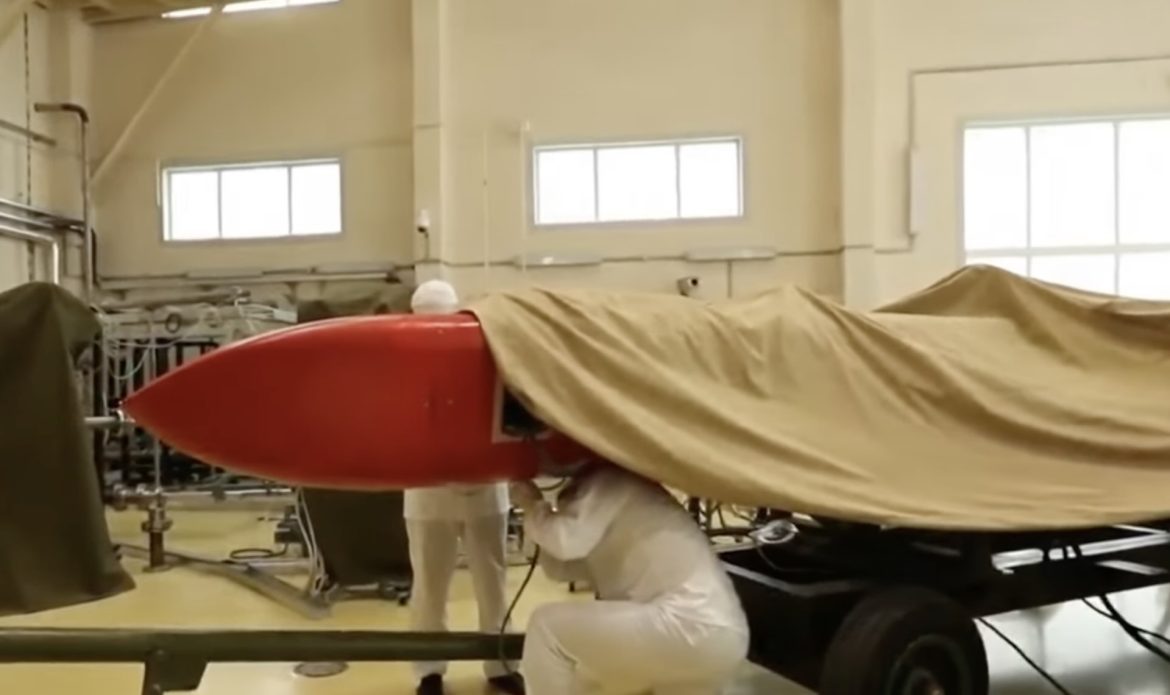Norway’s military intelligence service has confirmed that Russia’s most recent test of its nuclear-powered, nuclear-capable cruise missile, 9M730 Burevestnik—NATO reporting name SSC-X-9 “Skyfall”—was launched from the Novaya Zemlya archipelago in the Arctic.
“We can confirm that Russia has conducted a new test launch of the long-range cruise missile Skyfall (Burevestnik) on Novaya Zemlya,” Vice Admiral Nils Andreas Stensønes said in an emailed statement to Reuters on Monday, 27 October. Moscow had announced the test a day earlier without naming the launch site.
Russian officials have claimed that in the latest trial the missile flew roughly 14,000 km over about 15 hours—figures that, if accurate, would be consistent with a subsonic, very-long-endurance profile enabled by an onboard reactor. Independent corroboration of these performance details has not been presented.
The radiological picture remains a point of scrutiny rather than public dispute. Norway operates a dense network of air-filter stations across the High North; as of this week, Norwegian-based outlets reported that the system had not recorded abnormal readings linked to the event. That absence could reflect meteorology, test geometry, or engineering measures to limit emissions from the propulsion system.
Burevestnik is designed around a compact nuclear reactor that heats intake air for propulsion, in principle allowing almost unlimited range at low altitude. Russia first unveiled the concept in 2018 as part of a suite of “novel” strategic systems. Western analysts have consistently questioned its operational value, citing the hazards of flight-path contamination, subsonic vulnerability against modern air defences, and the challenge of fielding, storing and recovering airframes with live reactors. The programme’s risk profile was underscored in August 2019 by a lethal accident during a related test or recovery operation near Nyonoksa in Arkhangelsk region, in which five Rosatom specialists were killed and brief local radiation spikes were recorded.
A historical analogue helps to frame the technical debate. In the late 1950s and early 1960s, the United States pursued “Project Pluto”, a nuclear-ramjet effort intended for a supersonic low-altitude missile (SLAM). Two experimental Tory engines were ground-tested, but the programme was cancelled in 1964, in part because a flight article would have vented fission products along its route and offered limited advantage over rapidly maturing ballistic systems. The engineering principles are not identical to Russia’s current subsonic approach, yet the underlying trade-offs—range and persistence versus radiological and political costs—are comparable.
Media characterisations of Burevestnik have ranged from the technical to the stark. The Telegraph this week described it as a “tiny flying Chernobyl”, arguing that the concept is at once illogical and dangerous: potentially able to fly under some radar coverage by hugging terrain, yet hampered by subsonic speed, detectability and the practicalities of handling a nuclear propulsion unit. The phrase is a journalistic shorthand rather than an official designation, but it captures the central concern voiced by nuclear-safety specialists: that routine testing and any failure in flight could disperse radioactive material over remote seas and coastlines.
Advocates of the Russian programme frame Burevestnik as a niche tool for strategic penetration, capable of circuitous routing that complicates missile-defence planning. Critics counter that every additional hour aloft raises exposure to interception, navigation errors and mechanical faults, while the same deterrent effects can be achieved by existing intercontinental ballistic missiles, submarine-launched systems and air-launched standoff weapons without normalising nuclear-propulsion trials in the atmosphere. The recent lack of abnormal readings in Norway does not resolve the wider question: even if a more “closed-loop” thermal design reduces routine venting, accident scenarios remain the primary risk driver.
Against this context, the Oct. 27 confirmation from Oslo serves two purposes. First, it locates the test in a historically sensitive range area—Novaya Zemlya—where Russia has long conducted nuclear-related activity. Second, it anchors Russia’s public claims in observable geography while leaving open the essential technical unknowns: propulsion configuration, shielding approach, and end-of-flight procedures (whether controlled recovery on a range, ditching at sea, or destruction). Until those details are clarified by verifiable data, assessments will continue to rest on a mix of official statements, open-source imagery and inferences from legacy programmes.
The strategic implications turn less on a single flight than on scale and doctrine. If Russia proceeds towards a deployable system, it will confront the same dilemmas that ended Project Pluto: testing constraints, environmental liability and diplomatic blowback. Conversely, if Burevestnik remains a limited-run technology demonstrator, its primary utility may be political—signalling resolve, adding complexity to arms-control talks, and shaping public narratives about escalation. Either way, the episode highlights a familiar calculus in the nuclear age: the difference between what can be built and what is sensible to operate, especially when safety margins extend beyond national borders.


